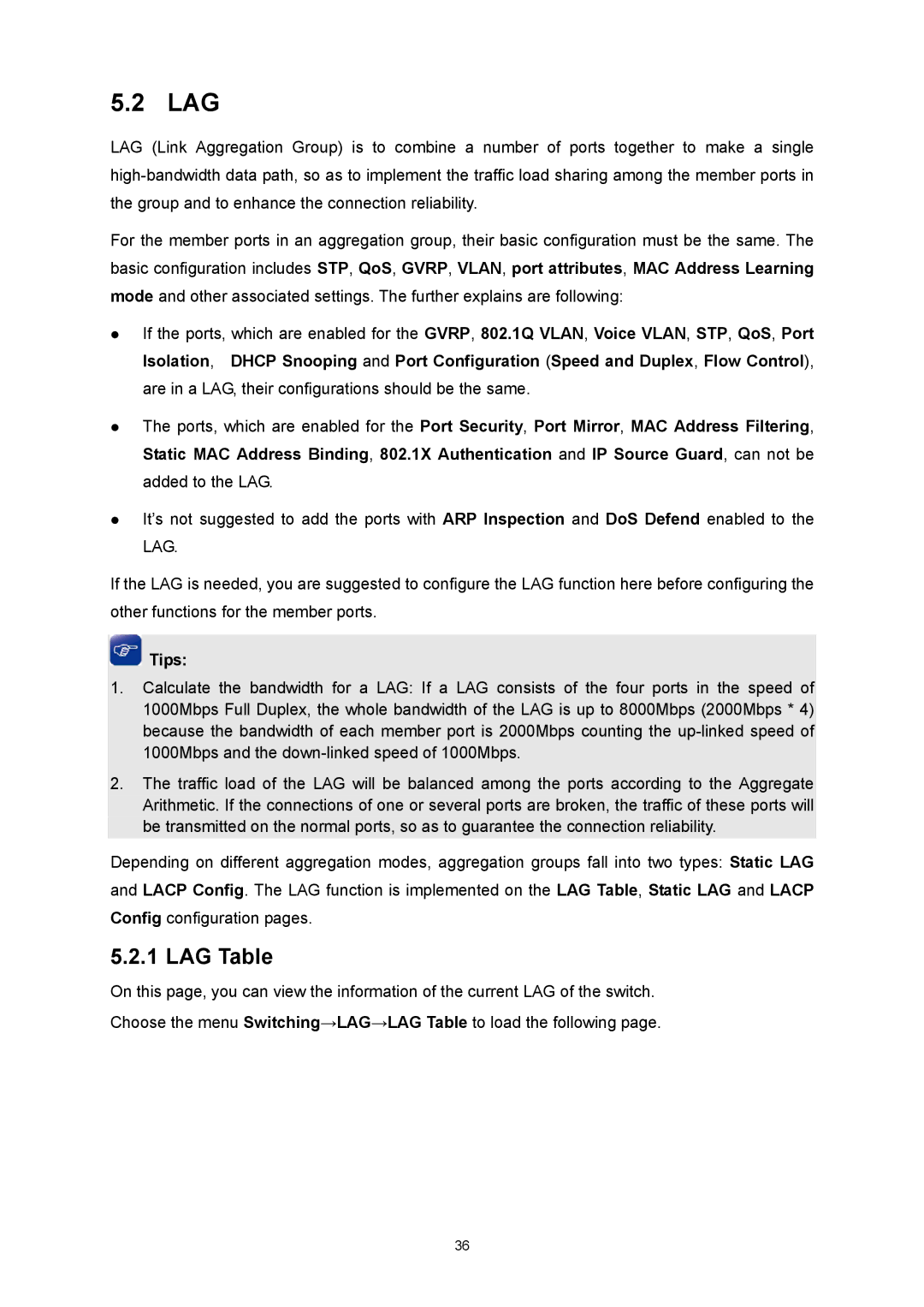
5.2 LAG
LAG (Link Aggregation Group) is to combine a number of ports together to make a single
For the member ports in an aggregation group, their basic configuration must be the same. The
basic configuration includes STP, QoS, GVRP, VLAN, port attributes, MAC Address Learning
mode and other associated settings. The further explains are following:
zIf the ports, which are enabled for the GVRP, 802.1Q VLAN, Voice VLAN, STP, QoS, Port Isolation, DHCP Snooping and Port Configuration (Speed and Duplex, Flow Control), are in a LAG, their configurations should be the same.
zThe ports, which are enabled for the Port Security, Port Mirror, MAC Address Filtering, Static MAC Address Binding, 802.1X Authentication and IP Source Guard, can not be added to the LAG.
zIt’s not suggested to add the ports with ARP Inspection and DoS Defend enabled to the LAG.
If the LAG is needed, you are suggested to configure the LAG function here before configuring the other functions for the member ports.
![]() Tips:
Tips:
1.Calculate the bandwidth for a LAG: If a LAG consists of the four ports in the speed of 1000Mbps Full Duplex, the whole bandwidth of the LAG is up to 8000Mbps (2000Mbps * 4) because the bandwidth of each member port is 2000Mbps counting the
2.The traffic load of the LAG will be balanced among the ports according to the Aggregate Arithmetic. If the connections of one or several ports are broken, the traffic of these ports will be transmitted on the normal ports, so as to guarantee the connection reliability.
Depending on different aggregation modes, aggregation groups fall into two types: Static LAG and LACP Config. The LAG function is implemented on the LAG Table, Static LAG and LACP Config configuration pages.
5.2.1 LAG Table
On this page, you can view the information of the current LAG of the switch.
Choose the menu Switching→LAG→LAG Table to load the following page.
36
